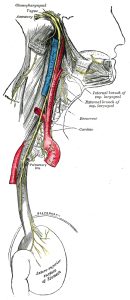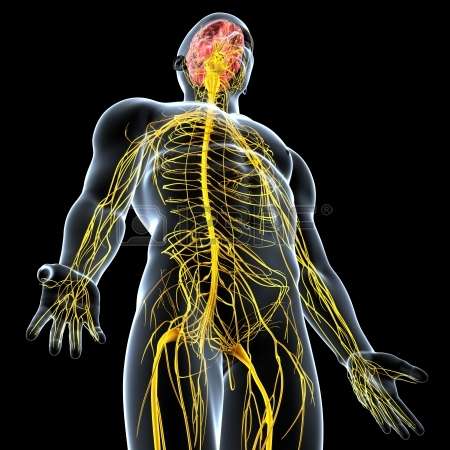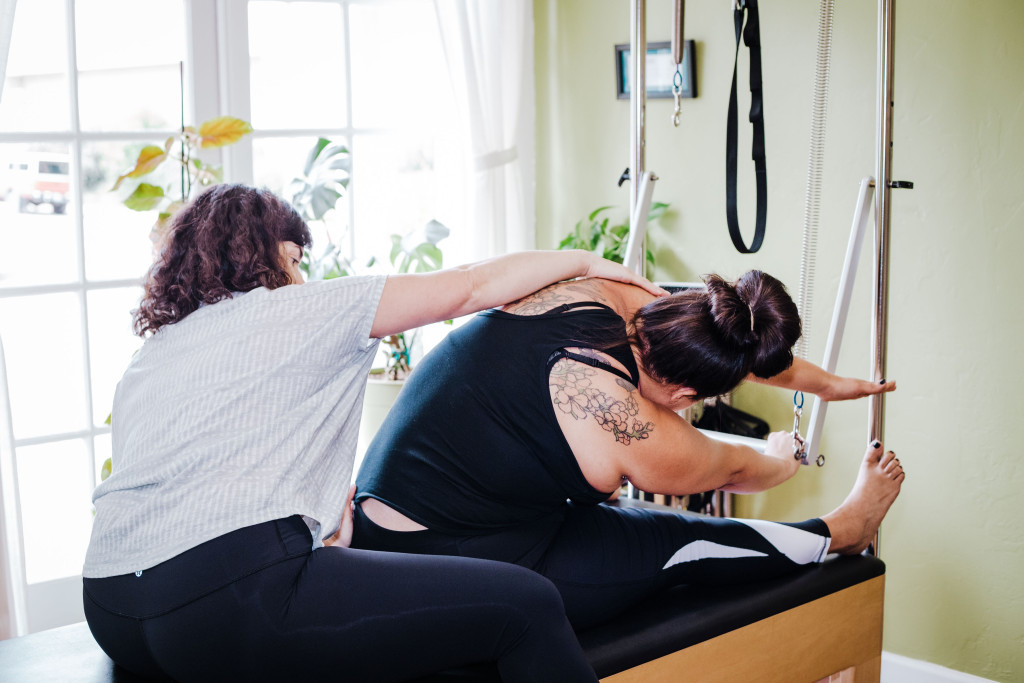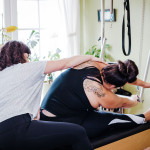Issue #282 – Wednesday, November 13, 2019
Pilates Imperfect II
Integrative Movement Facilitation
A Journey Towards Movement……..and Beyond
By Chantill Lopez
“Wholeness does not mean perfection; it means embracing brokenness as an integral part of life.” — Parker J. Palmer, A Hidden Wholeness: The Journey Toward an Undivided Life
What does wholeness and imperfection have to do with movement and teaching?
There is, in my mind, only one type of wholeness…the complete kind. Wholeness implies leaving nothing out: the muck, the broken, the hurting, the confusing, the brilliant, the delightful, the yummy and juicy feeling of strength and steadiness…wholeness is the incorporation of everything. As is the case with all things, wholeness can be achieved by many means, yet the word itself is full of a sense of efficiency, balance, and a strange and wonderful kind of harmony that does not exclude what we do not prefer.
Achieving wholeness requires acceptance, vulnerability, and a willingness to stay open to possibilities beyond our understanding. This is where Integrative Movement Facilitation (IMF)™ comes in. IMF is the framework from which we can stand on our clear knowing of the body and movement AND emerge into uncharted territory where the pieces can become one beyond analysis.
What beautiful things come into being when we allow what’s “right” and what’s not quite “right” to find a place within the same space.
In Part 1 of this article, Pilates Imperfect – To Dance Between Form and Feeling, we laid the foundation for what it might look like to shift our teaching perspective from one of training form, to one of facilitating feeling (and self-perpetuated growth) so that the two could foster longer-lasting, more deeply rooted, and sustainable change. We explored the overarching tenets of what I believe integrative movement is as a concept. I encourage you to review Part 1 (link here) before reading onward. In Part 2, I’d like to go further and provide you with additional information about IMF (a full description is on my website) and an example showing how you can begin to implement it into your teaching immediately!
Purpose + Outcomes
IMF offers us a chance to view our students and their potential from a different perspective, one in which helps them integrate more of themselves into a healthy expression of vitality that far outreaches exercise, the body, and the studio.
IMF is a framework, not a method, through which movement educators can do two things:
-
Support wholeness within the full aspect of a student. The IMF framework allows teachers, trainers, and movement therapists to skillfully acknowledge emotional, intellectual, and psychological resistance — particularly as it relates to trauma and fear — and facilitate students in developing awareness of their full somatic experience in the process of changing movement habits, patterns, and body-image beliefs.
-
Promote holistic and non-hierarchical tissue integration regardless of the particular movement modality or area of dis-ease, injury, or dysfunction.
Key Somatic Strategies
Vagal toning and nervous system tuning (informed in part by the Polyvagal Theory): Deliberately addressing the health of the vagus nerve and its function to better prepare the brain for learning and the body for feeling safe and open to sensing on different levels.

Vagal health – Toning and tuning the vagus can not only prime the body, but the nervous system for physical, mental, and emotional challenges.
Sensory organ integration and body awareness: Our objective is to learn how to initiate movement from the sense organs, engage them in the process of movement, cueing to the sense organs as well as the viscera to better connect a student’s inner and outer experience. By moving from the sense organs, we give the body an opportunity to expand its movement potential as well as develop greater exteroceptive and interoceptive awareness.
Integrative movement priming, patterning, and exploration: Integrative movement allows us to promote the interrelationship between the parts of the body but more importantly between the tissues of the body. By teaching and promoting an integrative movement discipline we bring our students closer to their biointelligence and a physical and psychological harmony despite areas of weakness, injury, dis-ease and discomfort.

Somatic inquiry + body awareness – Taking time to develop a deeper inner awareness can further tune the vagus nerve but also stimulate a more subtle ability to respond to sensation and differentiate pain.
Key Teaching Strategies
Facilitation: Facilitation allows us to move beyond the early stages of motor skill development, where training is key and the priority is on establishing a consistent set of movement strategies and agreed-on language.
Somatic Inquiry: Somatic inquiry supports movement facilitation and is foundational in developing a student’s ability to listen to their body. It gives rise to trusting that the body knows what to do and what it needs in any given situation — the body’s inner wisdom.
Open Questions + Reframing: Open questions are based on the change model Motivational Interviewing and help create an environment of curiosity that allow students to discover for themselves what the “right” or best answers are to the movement challenges they experience. Open questions that require anything but yes or no answers.
We can move through the strategies one by one and determine what might need to happen first to nudge a student into a deeper sense of self-efficacy, motor skill development, and overall competency. I’ve created a detailed prioritization checklist (link here) that I’ll use as a template to explore skill acquisition and whole-person integration applying IMF principles to a classical exercise – Saw. The following exercise breakdown will make better sense if you take a little time to explore the checklist first.
Exploring the ‘Saw’ – Using the IMF Framework
Common challenges: Students don’t like this exercise, in general, because it highlights the most common limitations in our modern bodies: tight low backs and tight hamstrings, a lack of rotation and hip mobility. Given this, we often hear groaning, see eye-rolling, and feel a lack of investment. If this isn’t the case, if students are mentally engaged and willing, the fact remains that the exercise itself can be elusive and challenging, which dampens motivation and incites frustration.
Priorities to address:
-
Addressing mental/emotional resistance, which manifests both in a tense body and an unoptimized brain, by toning the vagus nerve
-
Possible tools to apply:
-
Vagal toning + tuning – Begin your session standing (or you can incorporate right before saw), engage in a revitalizing breath practice, heel bounces to stimulate facial hydration, rocking and bouncing to heighten proprioception, interoception + exteroception. Incorporate lateral stretches and rotation right away. Incorporate movement of the eyes, stretching ROM and initiate movement from the eyes.
-
Box breathing – In for 4, hold for 4, out for 4, hold for 4
-
-
Inquiry – With eyes closed (still standing or lying down), inquire into areas of strength, flexibility, and openness in the body. Ask the question: how can you make saw easier today? What would you do to make it feel better?
-
-
-
Priming the body via release work to hydrate the facia, increase proprioception, and improve mobility
-
Possible tools to apply:
-
Sacral release – Lie down with a soft, medium-sized ball under the sacrum (orange Franklin balls work well). Roll right to left across the sacrum, rock right and left shifting weight into each hip (rotation), arch and curl.
-
Side-lying arm circles – Lying on one side, knees at 90 degrees, arms stacked and extended directly in front of you. Circle the top arm up and around allowing the whole body to respond and move. Keep some part of the hand on the ground as you circle. If you can’t do that, immediately reverse the direction. Repeat 4-5 times and reverse directions before going to the other side.

-
-
-
Fostering integration of the whole body for better cooperation and nurturing of what IS working well
-
Possible tools to apply:
-
Cue and encourage strength and engagement in the moments when it works for the body in front of you. Cue and encourage movement and adjusting when the body needs more wiggle room and space for negotiating stuck spots. As an example: Allow the knees to bend and straighten as needed. They don’t need to stay in any one fixed position. Allow the pelvis to move during the twist phase accommodating a low back and/or hips that can’t tolerate as much mobility. Encourage feeling how the whole body can feel good (and challenged). This part is all about fostering choice.
-
-
-
Somatic inquiry to help develop awareness of shifts and changes that can be applied internally from the student by listening better to what could elicit the highest value experience. (Which is very different than trying to get the exercise “right”).
-
Possible tools to apply:
-
Invite curiosity about inhaling and exhaling at different moments in the movement. What feels like it offers the greatest connection and freedom in THEIR body?
-
Ask any of these questions: What’s important, today, about getting it “right”? What is right? Why is achieving this exercise important to you and how will it support you in your life?
-
-
You’ll find an entire page with more in-depth examples of how and when you can draw from the IMF framework on my website. IMF incorporates an expansive set of practices and theories across many disciplines. What you’ve read here was designed to give you a broad-strokes view of what IMF is and what it can accomplish. More to come!

Chantill Lopez – “Be real. Don’t fake it. Be able to say I don’t know. Laugh at myself. Extend compassion to myself and my students. Enter in fully, every time, ready or not.”
Chantill is a movement explorer, educator, mentor and coach. She’s made a 20-year career teaching movement and it still makes her say “Hell, ya!” She is the founder of the education company, Skillful Teaching, the creator of the Thinking Pilates Podcast and author of two books on teaching, Moving Beyond Technique, and soon to be released Teaching (Movement) Matters (2020).
Her BIG PASSION is supporting movement teachers of all kinds in taking their work to the next level both personally and professionally through two flagship projects: the Skillful Teaching Mentorship Program and the Science + Psychology of Teaching Master’s Program.
As a journalist in a previous life, Chantill’s most recent creation is an exciting and unique new online course called Words Matters. Words Matter takes teachers through the process of improving their written and verbal skills as they relate to teaching and marketing. Get upcoming dates for all of her programs at skillfulteaching.com.
You can find Chantill teaching throughout the U.S. and offering online coursework and support to teachers around the world. Her home base is Sacramento, CA.

